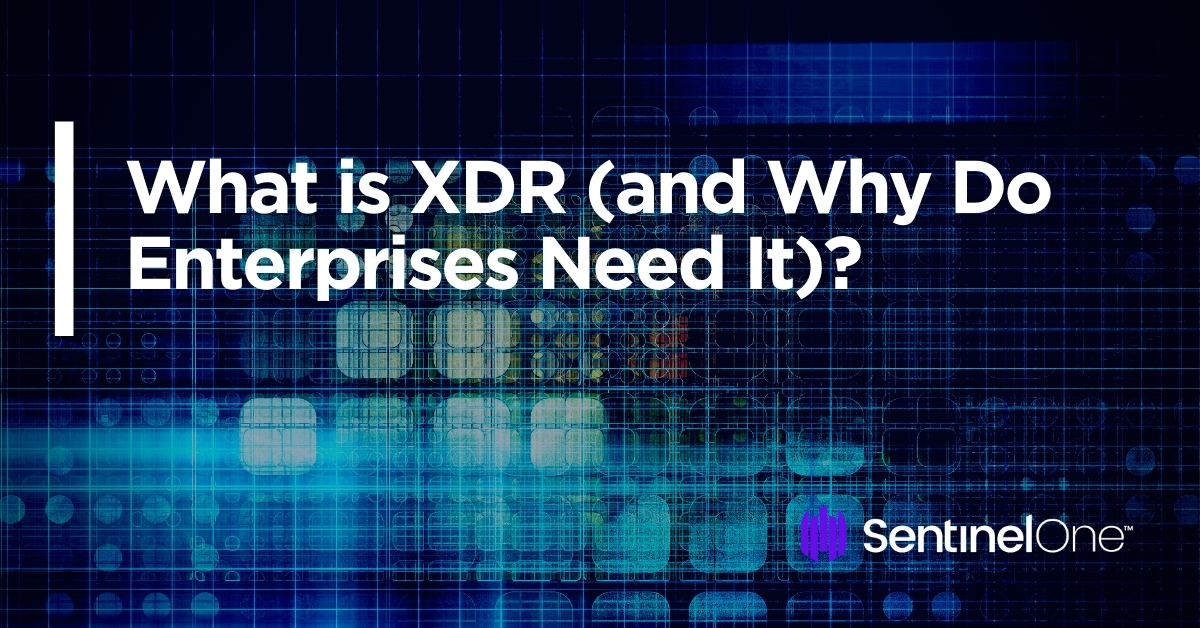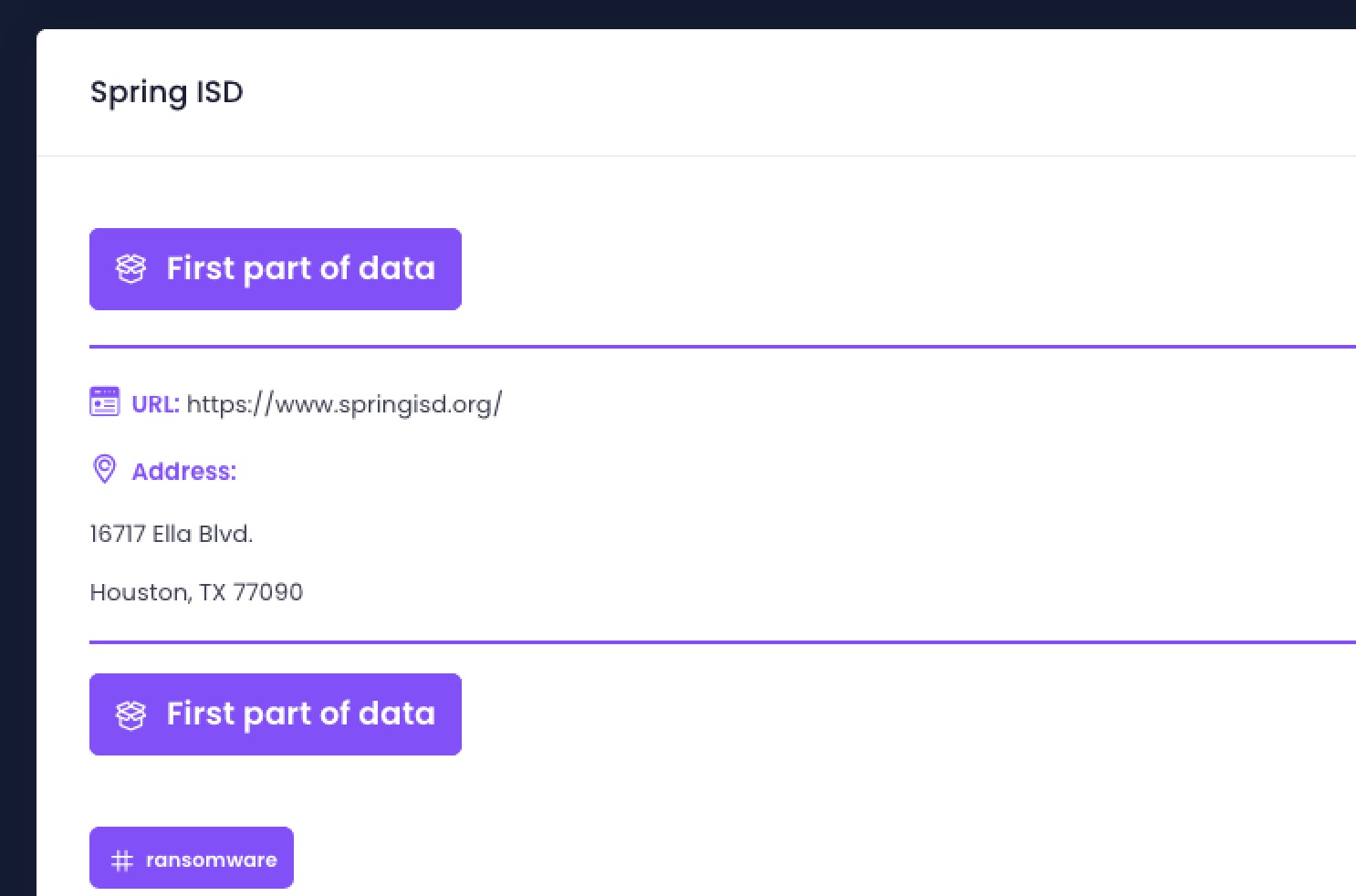What is XDR (and Why Do Enterprises Need It)?
In the world of cybersecurity, acronyms abound. From AV to EPP to EDR and now XDR, these changing technologies reflect an ever-present truth: cyber threat actors keep evolving, and defenders need to stay one, or more, steps ahead. Coupled with the shifting threat landscape are the innovations in business and business operations themselves. We’ve moved from an on-prem world bounded by a manageable network perimeter to a distributed, cloud-powered infrastructure, with remote working and 5 billion monthly teleconferences adding to the complexity of ensuring business and operational security. On top of all that, as any CISO will tell you, the number of cyber attacks, cyber attackers, and offensive toolset is increasing.
The security technologies of the past were not built to cope with today’s complex, fast-moving threatscape. The evidence for that is compelling: rising ransomware attacks coupled with data breaches and IP theft, strained SOC teams dealing with alert fatigue and staffing shortages, and the proliferation of attacks that succeed despite the presence of traditional security tools.

Fortunately, these are just some of the problems XDR was designed to solve. In this post, we’ll explain what XDR is and how it changes the game to empower enterprise security teams and put threat actors on the back foot.
What is XDR?
XDR, Extended Detection and Response, is the evolution of EDR, Endpoint Detection and Response. EDR, particularly ActiveEDR, brought visibility and automated response to endpoints like laptops and workstations, but today’s network has so many other data points that may be traversed by attackers on the road to a successful compromise, from mobile phones and IoT devices, to Containers and Cloud-Native applications.
Sometimes referred to as “Cross-Layered” or “Any Data Source” detection and response, XDR supersedes EDR by delivering visibility into all data that crosses the network, rather than just data from the endpoint layer. XDR platforms like SentinelOne’s Singularity Platform collect data from all assets across the enterprise environment, collating it into a single data lake, and apply security analytics and AI across multiple security layers to provide enhanced automated detection and response.
What Are the Benefits of XDR over EDR?
With a single pool of raw data comprising information from across the entire ecosystem, XDR allows faster, deeper and more effective threat detection and response than EDR, collecting and collating data from a wider range of sources.
Cyber attacks typically travel across many enterprise assets, and only the visibility provided by XDR is capable of creating a full narrative of what happened, when, where and how. With XDR, the same contextualized Storylines that ActiveEDR provides across the Endpoint layer can be constructed across multiple layers: cloud, containers, virtual machines, IoT, endpoints, servers, and so on.
This comprehensive visibility leads several benefits, including:
- increased ability to detect stealthy attacks
- reduced dwell time
- increased speed of mitigation.
Moreover, thanks to AI and automation, XDR reduces the burden of manual work on security analysts. An XDR platform like Singularity can proactively and rapidly identify sophisticated threats, increasing productivity of the security or SOC team and return a massive boost in ROI for the organization.
How is XDR Different from SIEM?
Although both XDR and SIEM tools collect data from multiple sources, they have almost nothing else in common. Unlike an XDR platform, SIEMs (like passive EDR tools) have no ability to identify meaningful trends, nor do they provide any automated detection or response abilities. Further, to be useful, SIEMs require a great deal of manual investigation and analysis.
Fortunately, if you have invested in SIEM tools, these need not be made redundant by your XDR platform, as they can directly feed into your XDR platform’s data lake, exposing all that raw data to the XDR’s AI and machine learning capabilities.
What Should I Look For in a Good XDR Solution?
The first key to an effective XDR solution is integration. It needs to work seemlessly across your security stack and provide native tools with rich APIs. Beware immature or rushed solutinos that may be nothing more than old tools bolted together. Your XDR should offer a single platform that allows you to easily and rapidly build a comprehensive view of the entire enterprise.
Secondly, automation backed by advance AI and proven Machine Learning algorithms is essential. Does your vendor have a rich history in developing state-of-the-art AI models, or are they primarily known for legacy technologies but now trying to change their spots?
Thirdly, how easy is your XDR solution to learn, maintain, configure and update? One of the main advantages that a strong XDR solution brings in increased productivity for your staff with automated detection and response. However, you want to be sure you’re not simply redirecting the work your staff have to do to managing or navigating a complicated solution.
What Are the Benefits of SentinelOne’s Singularity, AI-Powered XDR Platform?
SentinelOne’s AI-Powered XDR Platform brings all the benefits you’d expect from a complete solution: deep visibility, automated detection and response, rich integration and operational simplicity. With a single codebase and deployment model, Singularity is the first XDR to incorporate IoT and CWPP into an XDR platform.
All IoT data is seamlessly integrated into Singularity for ease of threat hunting and never-seen-before context. Using AI to monitor and control access to every IoT device, Singularity XDR allows machines to solve a problem that previously was impossible to address at scale.
Singularity’s container workload protection is supported on all major Linux platforms, physical and virtual, cloud native workloads, and Kubernetes containers. It provides prevention, detection, response, and hunting for known and unknown cyber threats. This includes malicious files and live attacks across cloud-native and containerized environments, offering advanced response options and autonomous remediation in real time.
Conclusion
Cyber security is often likened to an arms race between attackers and defenders, and that race is now extending beyond the single layer of the endpoint. As businesses embrace remote working and cloud infrastructure, introducing an increasing attack surface, only an integrated platform can provide the visibility and automated defences required across all assets. By combining endpoint, network, and application telemetry, XDR can provide the security analytics to win that race through enhanced detection, triage and response. If you’d like to know more about SentinelOne’s Singularity Platform, contact us or request a demo.
Like this article? Follow us on LinkedIn, Twitter, YouTube or Facebook to see the content we post.
Read more about Cyber Security
- What Happened to My Mac? Apple’s OCSP Apocalypse
- macOS Big Sur Has Landed | 10 Essential Security Tips You Should Know
- SentinelOne Guard Rails | Working Together to Secure Better
- Cloud Security | Understanding the Difference Between IaaS and PaaS
- Hiding in Plain Sight | The IoT Security Headache and How to Fix It
- Healthcare and Cybersecurity in the Times of Covid-19
- How to Catch a Spy | Detecting FinFisher Spyware on macOS
- APTs and Defending the Enterprise in an Age of Cyber Uncertainty
- Unifying Endpoint Security for Enterprise | An Interview With Migo Kedem




